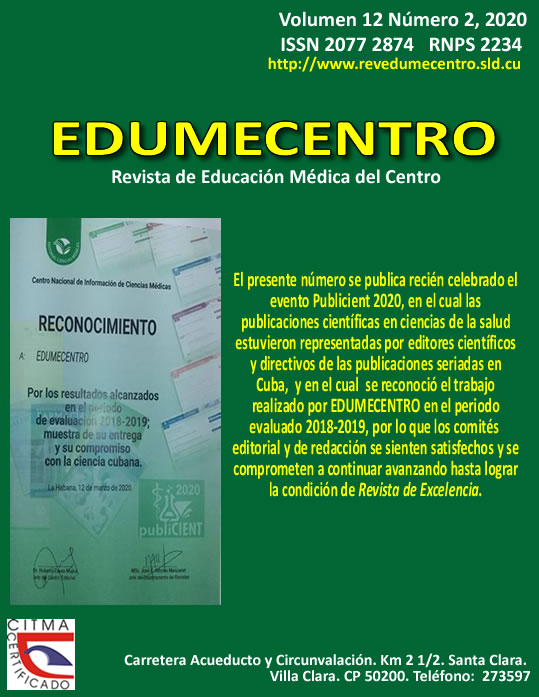Cognitive and affective factors in teaching and learning of English as a foreign language
Keywords:
aprendizaje, psicología, emociones, educación médica.Abstract
Proficiency in English demands the acquisition of the student's communicative competence through the teaching-learning process in their attempt to meet the demands of a competent professional. Using it for communicative purposes is an increasingly demanded capacity in the competitive working world; but this purpose, like that of any foreign language, includes a long process of appropriation of the language, a path full of obstacles for the student who is acquiring grammatical, lexical, functional and cultural tools, and in turn they are developing the learning strategies and skills that allow them to increase their linguistic and communicative competence. The authors aim to socialize some cognitive and affective factors that favor this process, based on their teaching experiences.Downloads
Download data is not yet available.
Published
2020-04-01
How to Cite
1.
Angel Rodriguez N, García Hernández G, García Fernández T, Mata Loy J. Cognitive and affective factors in teaching and learning of English as a foreign language. EDUMEC [Internet]. 2020 Apr. 1 [cited 2026 Jan. 3];12(2):230-7. Available from: https://revedumecentro.sld.cu/index.php/edumc/article/view/1451
Issue
Section
COMUNICACIÓN
License
Los autores que publican en esta revista están de acuerdo con los siguientes términos:- Los autores/as conservarán sus derechos de autor y ceden a la revista el derecho de primera publicación de su obra, el cuál estará simultáneamente sujeto a una Licencia Creative Commons Reconocimiento-NoComercial-CompartirIgual 4.0 Internacional (CC BY-NC-SA 4.0) que permite a terceros compartir la obra siempre que se indique su autor y su primera publicación esta revista.
- Los autores pueden establecer por separado acuerdos adicionales para la distribución no exclusiva de la versión de la obra publicada en la revista (por ejemplo, situarlo en un repositorio institucional o publicarlo en un libro), con un reconocimiento de su publicación inicial en esta revista.
- Se permite y se anima a los autores a difundir sus trabajos electrónicamente (por ejemplo, en repositorios institucionales o en su propio sitio web) antes y durante el proceso de envío, ya que puede dar lugar a intercambios productivos, así como a una citación más temprana y mayor de los trabajos publicados (Véase The Effect of Open Access) (en inglés).










